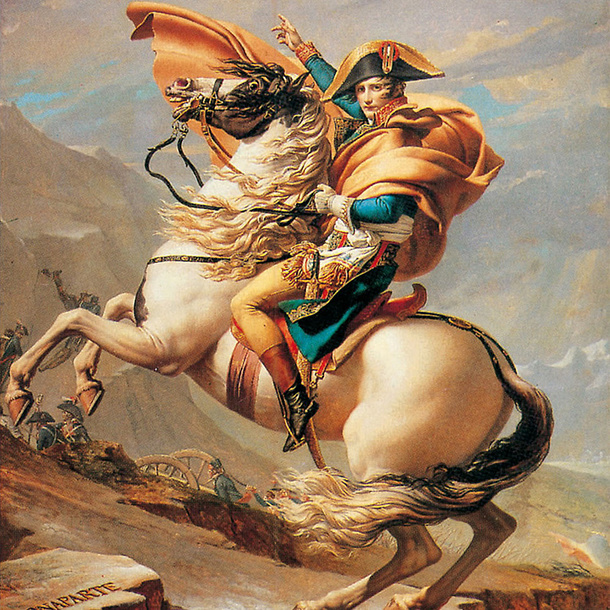Previous to the Enlightenment, Rococo was the main art style. Enlightenment artists found Rococo immoral and intended to reign in its arbitrary sensuality. The new art movement of the Enlightenment was called Neoclassicism, and its artists preferred definite lines and clear images over colors. As the name suggests, they took ideas from the classical era and applied them to modern times. Neoclassical art portrays its subjects realistically and attempts to mimic Roman and sometimes Greek elements.

"Et in Arcadia Ergo" by Nicholas Poussin, c. 1630s

"Oath of the Horatii" by Jacques-Louis David, 1784

"Napoleon Crossing the Alps" by Jacques-Louis David, 1801
(This was used as positive propaganda for Bonaparte.)
Source:
https://courses.lumenlearning.com/boundless-arthistory/chapter/the-enlightenment/


4 comments:
Neat! I love the Napoleon one...iconic.
I find this kind of ironic considering the Enlightenment was all about thinking for one's self, yet they go on to try to constrict the type of art that is "acceptable" to create and to be viewed by the public. On one hand I do understand the rational: that the sensuality of the Rocco paintings strays people from the potentially purely logical humans we could be and instead leads us astray to our more animalistic, sensual side. But, there is still a streak of hypocrisy by taking away the choice to become rational on our own and instead of thinking for one's self, people now follow the literature and art the "enlightened" like doctrine. While the enlightened thinkers tried to encourage others to stray away from religious and other types of doctrine and question everything, the inevitably made a sort of doctrine of their own and became what they rejected.
I love all of these paintings, my favorite is Napoleon crossing the alps because it is so detailed. If you look at the horse’s mane and napoleon’s cape, the detail is amazing. The painting is also very famous, and as Jessie said, iconic
Thank you for sharing Lainey! I absolutely love the detail in Neoclassical art; I think the skill demonstrated is breathtaking. In particular, the portrayal of the human body is stunning, I appreciate the use of shadows in order to accentuate different curvatures/strengths and weaknesses. Through these elements, I find that neoclassical art can be as expressive as something abstract.
Post a Comment